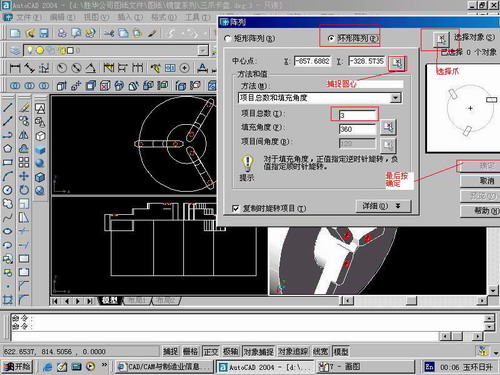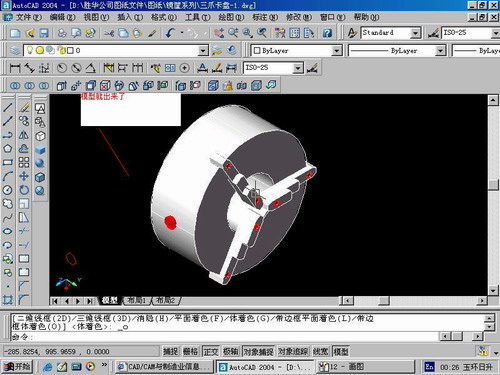1) model based disturbance attenuation


模型扰动抑制
2) MBDA


基于模型的扰动抑制
1.
In this paper, the Model-Based Disturbance Attenuation (MBDA) control is introduced into the I-P position conroller which brings faster response and higher percision than that of the sherr I-P position controller.
基于模型的扰动抑制(MBDA:Model-BasedDisturbanceAttenuatin)控制引入I-P位置控制器中,使系统与单纯的I-P位置控制器相比响应速度大大加快,精度也很大提高。
3) disturbance rejection


扰动抑制
1.
Disturbance Rejection for Nonlinear Time-Delay Systems Affected by Persistent Disturbances;
受持续扰动的非线性时滞系统的扰动抑制研究
2.
Consequently the problem of disturbance rejection for zero steady-state error is transformed into the optimal control problem for systems without disturbances.
研究具有外部持续扰动的线性控制系统最优无静差扰动抑制问题。
3.
In addition,Sontag s formula is used to develop the design approaches for the finite-time stable,quasi-contractively stable and disturbance rejection controllers.
本文还运用Sontag公式,分别给出了非线性系统有限时间稳定、准收敛稳定和扰动抑制控制器的设计方法。
4) Disturbance attenuation


扰动抑制
1.
We then apply the passivity theory to studies of disturbance attenuation, and put forward concise conditions guaranteeing negative output feedback to solve disturbance attenuation problems.
研究自由动态临界稳定仿射系统的输入到状态镇定 ,通过零状态可探测假设 ,减弱了通常的前提条件 :自由动态全局渐近稳定 ;运用无源性原理研究扰动抑制 ,给出了输出负反馈解扰动抑制问题的简明条件 。
2.
On the basis of Lyapunov stability theory, nonlinear robust adaptive controllers and parameter adaptive laws for speed tracking and flux tracking with unknown load torque and equivalent bounded disturbances are developed by using adaptive backstepping algorithms, nonlinear damping and disturbance attenuation techniques, and guaranteed that the system is in the s.
感应电动机以a,b为轴的静止坐标系中等效的数学模型来描述,针对负载不确定和等效的有界扰动,利用自适应backstepping方法、非线性阻尼和扰动抑制技术,基于Lyapunov稳定性理论,设计鲁棒自适应控制器,获得速度和磁通的跟踪,保证系统处于稳定有效的工作范围。
3.
Tracking control and disturbance attenuation is the basic control in actual project.


跟踪控制和扰动抑制是广泛存在于工程实际中的一类基本控制问题。
5) H-infinity disturbance attenuation


H_∞扰动抑制
6) dynamic model of salt inhibition


抑制动力学模型
补充资料:AutoCad 教你绘制三爪卡盘模型,借用四视图来建模型
小弟写教程纯粹表达的是建模思路,供初学者参考.任何物体的建摸都需要思路,只有思路多,模型也就水到渠成.ok废话就不说了.建议使用1024X768分辨率
开始
先看下最终效果

第一步,如图所示将窗口分为四个视图

第二步,依次选择每个窗口,在分别输入各自己的视图

第三步,建立ucs重新建立世界坐标体系,捕捉三点来确定各自的ucs如图

第四步,初步大致建立基本模型.可以在主视图建立两个不同的圆,在用ext拉升,在用差集运算.如图:

第五步:关键一步,在此的我思路是.先画出卡爪的基本投影,在把他进行面域,在进行拉升高度分别是10,20,30曾t形状.如图:

第六步:画出螺栓的初步形状.如图

第七步:利用ext拉升圆,在拉升内六边形.注意拉升六边行时方向与拉升圆的方向是相反的.
之后在利用差集运算


第八步:将所得内螺栓模型分别复制到卡爪上,在利用三个视图调到与卡爪的中心对称.效果如图红色的是螺栓,最后是差集

第九步:阵列

第10步.模型就完成了

来一张利用矢量处理的图片

说明:补充资料仅用于学习参考,请勿用于其它任何用途。
参考词条